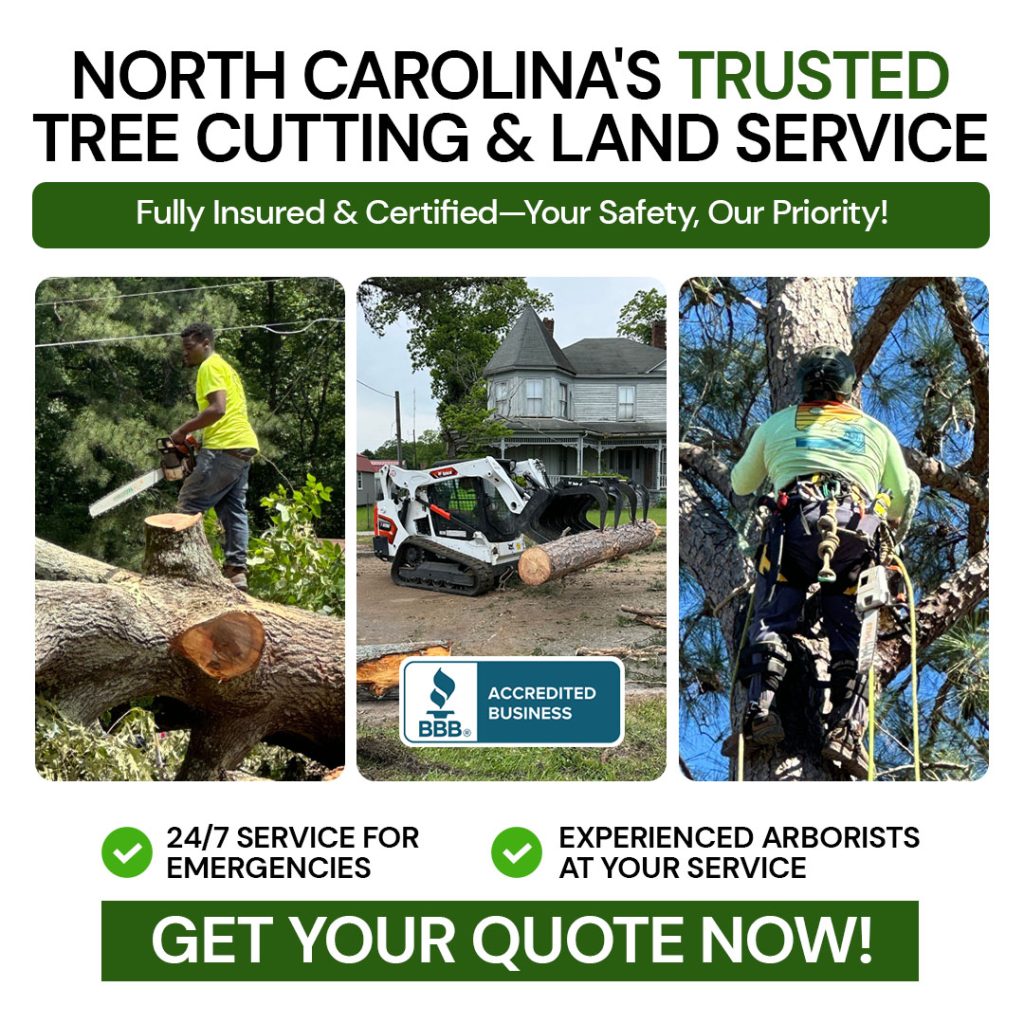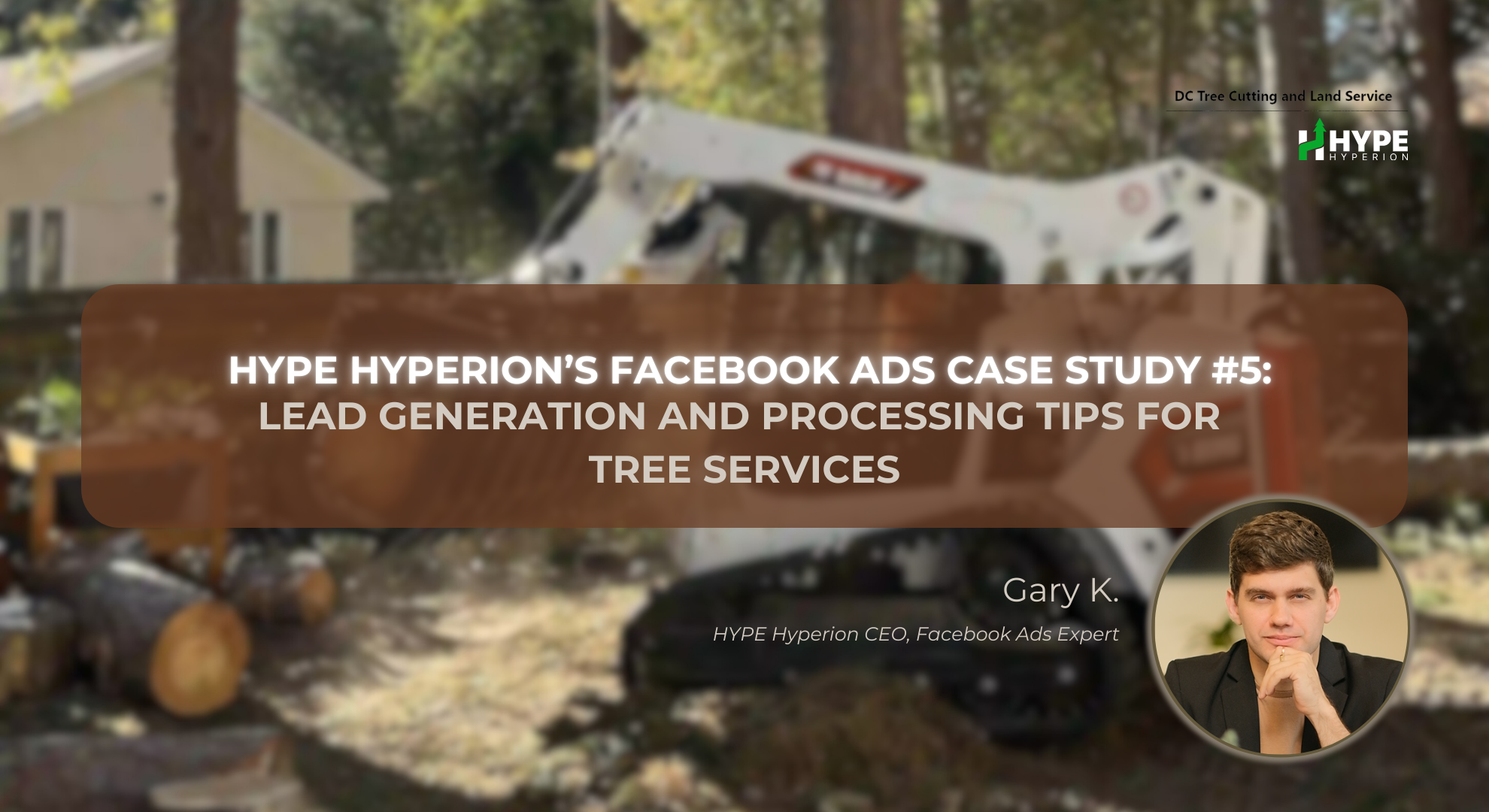With years of experience in residential tree care, their mission is to ensure the safety and satisfaction of customers through top-quality tree cutting and removal services. This case study highlights how HYPE Hyperion leveraged Facebook Advertising to drive leads for this niche service, along with actionable insights for similar campaigns.
Understanding the Challenge: Lead Generation for Tree Services
Generating leads for a tree service business on Facebook presents unique challenges. Unlike industries with high-volume, immediate demand, tree services cater to a niche audience with specific, often seasonal, needs. This creates a higher cost-per-lead (CPL), which can range from $40 to $80. However, with the right strategies, it is possible to attract quality leads and achieve a strong return on investment (ROI).
Why Picture Ads Outperformed Video in This Campaign
In this case, picture ads consistently outperformed video ads. The visual simplicity and direct messaging of picture ads resonated with the target audience.
Here’s why:
- Lower Production Costs: Creating high-quality video content requires more time and resources. By focusing on static images, we saved on production costs without compromising performance.
- Quick Message Delivery: Picture ads allow for instant communication of key information, which is crucial for services like tree cutting where urgency often plays a role.
- Testing and Optimization: With multiple picture ads in rotation, we tested various creatives to identify what resonated most with the audience. Bright, professional imagery showcasing tree care services performed best.


Optimization Strategies for Facebook Ads
Effective Facebook ad campaigns demand continuous optimization to maximize results. In this project, audience targeting was initially broad to gather data but was later refined to focus specifically on homeowners in Rocky Mount and nearby areas with a demonstrated interest in home improvement. Ad placement testing revealed that while automatic placements provided reach, manual placement on the Facebook feed generated the highest-quality leads by capturing attention where users were most engaged. Additionally, budget allocation was carefully adjusted throughout the campaign, with higher-performing ads receiving increased spending while underperforming ads were paused to improve overall efficiency.
The Importance of Flexibility in Lead Processing
Once leads are generated, the real work begins. For Tree Cutting Service, flexibility in handling inquiries proved essential.
- In-Person Estimates: Offering on-site consultations significantly increased lead-to-client conversion rates. Seeing the property in person not only built trust but allowed for accurate service estimates, giving potential customers confidence in the company’s expertise.
- Balanced Follow-Ups: Striking a balance between persistence and patience was critical. Leads with immediate needs were prioritized for follow-up calls, while those expressing interest but lacking urgency were added to an email nurturing campaign. This ensured that the business stayed top of mind without being overly aggressive.
Email Campaigns for Long-Term Success
Email campaigns played a crucial role in maintaining long-term engagement, especially since not all leads for tree care services convert immediately. To maximize effectiveness, leads were segmented based on urgency—high-priority leads were contacted directly by phone, while those with lower urgency were nurtured through targeted email campaigns. The emails provided educational content, including tree maintenance tips and insights on the importance of professional care, positioning the business as a trusted industry expert. Additionally, seasonal reminders, such as preparing for hurricane season or winter storms, were incorporated to encourage timely service bookings and maintain client interest throughout the year.
Key Takeaways from the Campaign and Results
This Facebook ad campaign for DC Tree Cutting and Land Service offers valuable lessons for businesses in niche industries:
- Expect Higher CPLs: Niche services like tree care may not generate low-cost leads on Facebook, but quality over quantity often leads to better ROI.
- Focus on Creative Testing: Picture ads can outperform video in certain cases. Invest in testing various ad creatives to find what resonates most with your audience.
- Optimize Lead Processing: Flexibility and a personalized approach to handling leads are essential for maximizing conversions.
- Leverage Email Marketing: For non-urgent leads, email campaigns can keep your business top of mind and encourage long-term engagement.
By employing these strategies, HYPE Hyperion was able to deliver a successful Facebook advertising campaign that not only generated leads but also supported Tree Cutting Services from North Carolina in building trust and credibility within their local community.

The campaign with a CPL of $41.77 demonstrated the most effective results among all tested ad sets, with a reach of 9,273 users and 16,305 impressions. This confirms the point that for services like these, a low cost per lead shouldn’t be expected, as the average price typically ranges between $40-80. However, considering the service cost starts at $2,500, this CPL is justified, as even a single conversion can result in a significant return on investment. With proper strategy and creative testing, it is possible to achieve CPL on the lower end of this range, making the campaign both effective and profitable.





